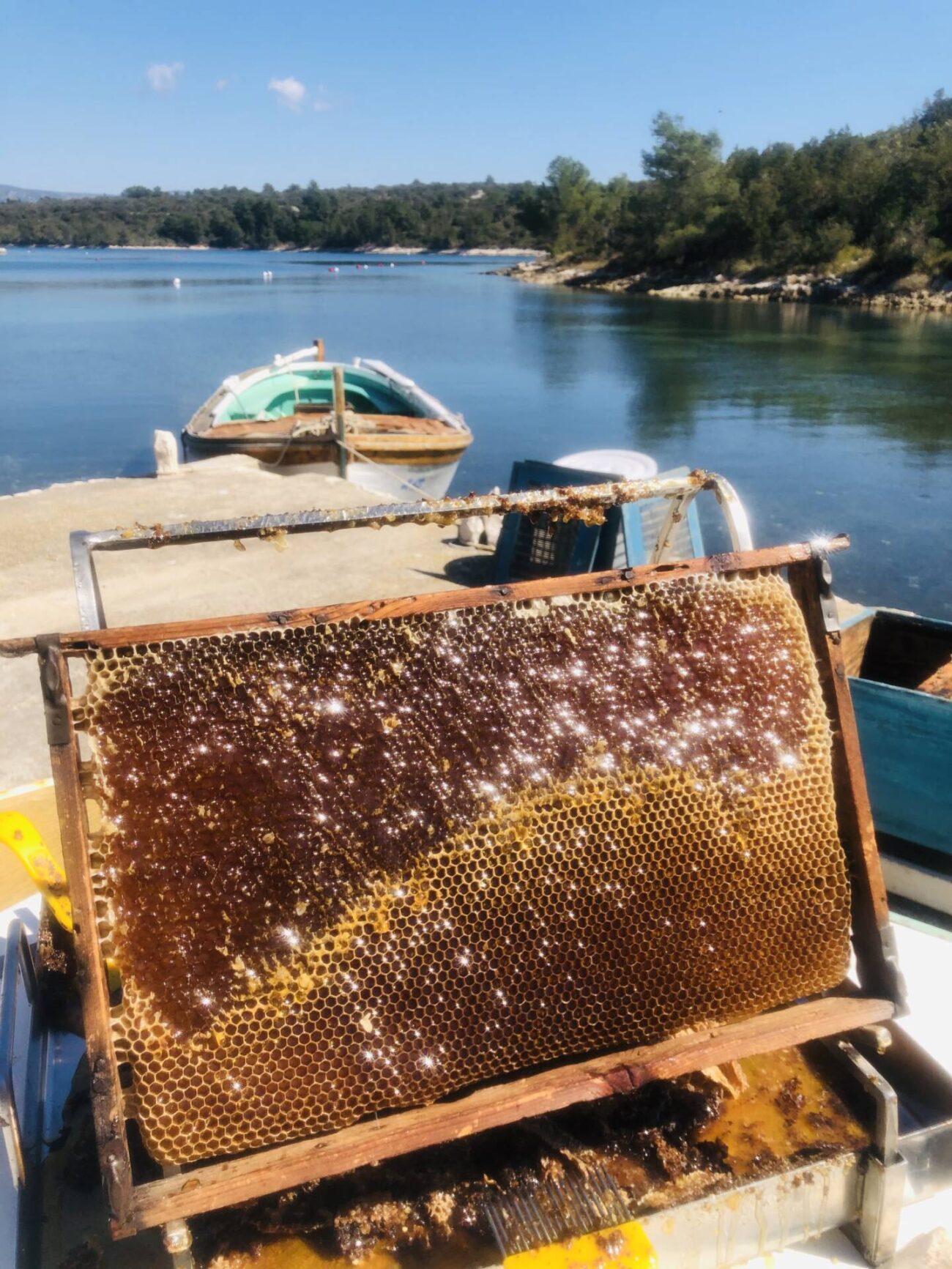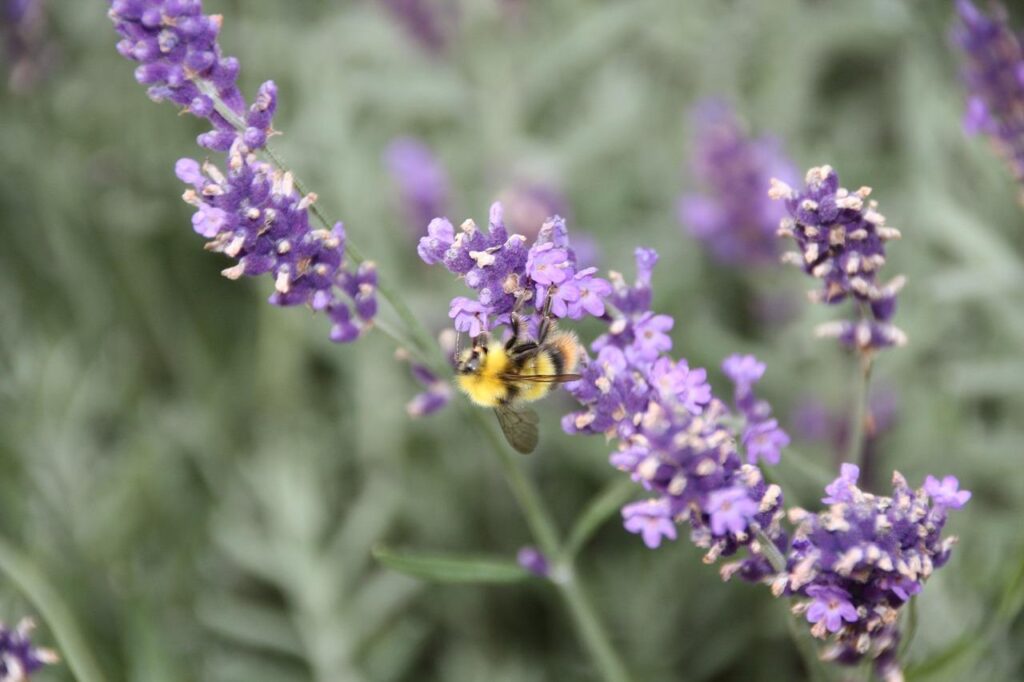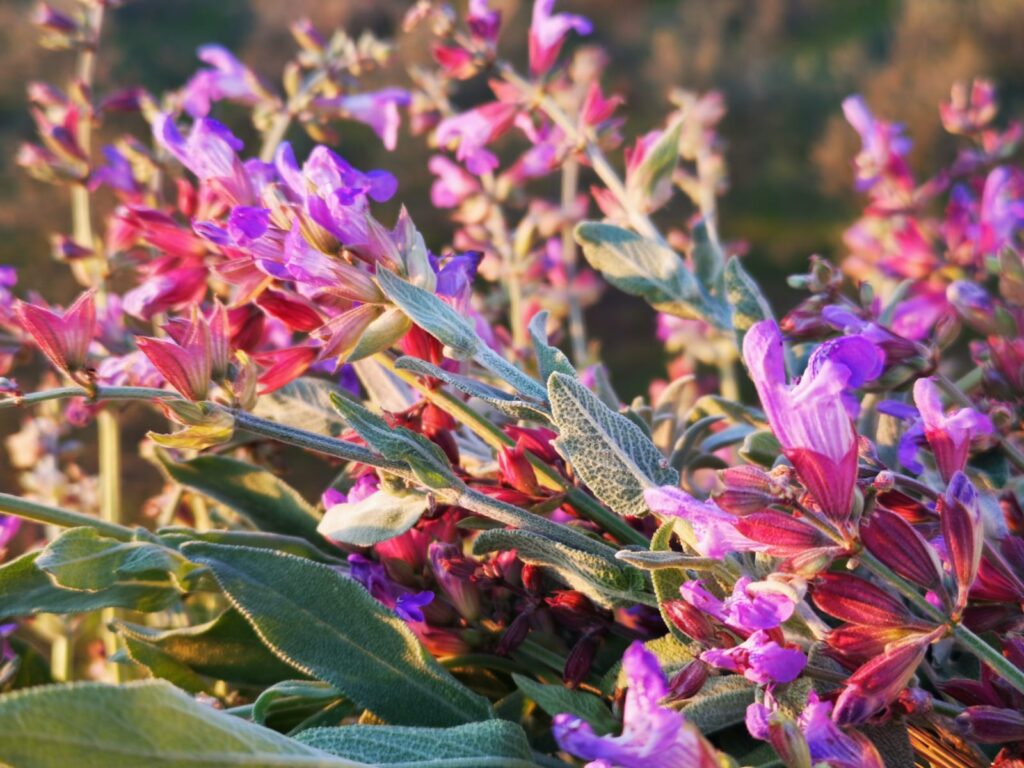
Honey – Medicine of the Gods
Honey is a sweet substance which bees produce by collecting nectar from flowering plants, which they digest and regurgitate for storage in honeycomb cells, where it is covered with protective wax once excess water has evaporated.
Honey has been used in the human diet since ancient times, and has always been highly prized. The oldest visual record of honey production dates to 7000 BCE, and it was called ‘the food of the gods’ in Ancient Greece. Bee-keeping on Hvar Island is known to have started a very long time ago. Archaeologists have found the remains of clay cylindrical beehives at four locations on Hvar, proving that bee-keeping was important in Roman times. Nowadays there are more than fifty small family firms registered for bee-keeping.

Honey is used in folk medicine, credited with the medicinal properties of the plants from which it has been produced. A word of warning: it is best to consult your doctor before using any substance, however natural, for medicinal purposes.
Hvar is a medicinal island, a real aromatic Mediterranean herb garden. The heady scents of rosemary, sage, lavender, and strawberry tree lift the spirits for everyone who comes to this, the warmest and sunniest island on the Adriatic, especially on its south side. The nectar collected from this wealth of medicinal plants is turned into Hvar’s specially recognizable honey.
As the possible flower sources for honey are numerous, no two honeys are identical. This variability allows the consumer a wide choice in finding the particular characteristics which please the individual. However, expert apiarists create the conditions where their bees collect nectar from particular plants and so create honey dominated by one or other specific source. From Hvar’s many medicinal plants, there are a few which are used to produce characteristic local honeys.

Hvar’s melliferous plants
Sage plants flower in April and May, providing an abundance of nectar when conditions are hot and damp.
In June and July Hvar is permeated with the scent of lavender, the beekeepers’ favourite melliferous plant.
Rosemary is an evergreen plant which grows to a height of two metres, and flowers from the beginning of February to the middle of April on Hvar. The little island of Šćedro is famous for its abundant rosemary, and honey which is extracted there in the spring is exclusively rosemary honey.
Common (dwarf) heather (calluna vulgaris) and tree heather (erica arborea), evergreen plants with purple or white flowers, are widespread on Hvar. Tree heather flowers in spring, common heather in September. Their melliferous capacity depends on rain during the flowering period.
The strawberry tree flowers the latest of these melliferous plants, from October to December.
Types of Honey on Hvar Island
Honeys are differentiated according to the way they are produced and the type of flower they have come from. There are three main production methods: centrifugal extraction; melting (heating the crushed honeycombs in order to melt the protective wax); and cold-kneading, in which the caps are removed from the honeycombs, which are then spun gently to extract the honey. The honey produced from Hvar’s melliferous plants is mainly processed using the centrifugal extraction method.
Sage honey
This is our most sought-after honey. It is produced in lesser quantity than the other types, probably because sage plants flower in the spring at the same time as rosemary. Sage honey is basically light yellow and slightly greenish, but its colour varies from year to year, depending on the influence of other flowering plants nearby. It is a fine honey with a pleasant dominant taste. It stays fluid for a long time before solidifying with medium-sized crystals. It is known to have beneficial effects on the respiratory system, especially on coughs and colds.

Lavender honey
This is a light-coloured honey of the highest quality, with a distinct aromatic scent and a gentle, soothing effect. It is said to help the uptake of calcium and iron from food and medicines, making it effective for protecting against rickets and anaemia, and is often recommended for pregnant women. It can soothe muscular cramps and headaches, and may help with flatulence, also respiratory, digestive and urinary problems.
Rosemary honey
This is one of the finer types of honey. It has a mild but distinctive taste and is a clear light yellow colour when liquid, which turns white as it crystallizes. It is used in cases of liver problems, and helps flatulence and wind. It is said to be effective for cardiovascular problems, rheumatic conditions and gout.
Heather honey
Heather from coastal areas is considered to have the finest flavour. Heather honey is light-coloured, opaque, and has a mild scent. It is recommended for rheumatic conditions, gout, prostate problems, and urinary problems including kidney stones and cystitis.
Strawberry tree honey
This is one of the best quality types of honey in respect of its nutritional constituents. It is extremely dense in structure and has a bitter taste, so that diabetics may be able to eat it. It is a known natural antioxidant. It is recommended for improving the blood and regulating blood pressure, and it can also help to cure urinary infections. It has a gentle effect on the respiratory system, so it is often recommended for asthmatics.
See ‘Island Products and Souvenirs‘ for listed local honey producers







